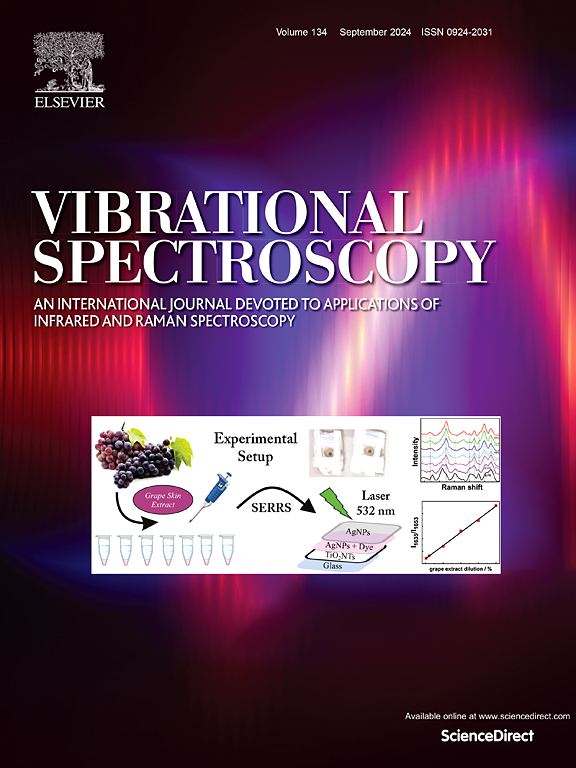PyQt5 Coding and optimization for heterodyne detected vibrational sum frequency generation spectroscopy
IF 3.1
3区 化学
Q2 CHEMISTRY, ANALYTICAL
引用次数: 0
Abstract
Optoelectronic thin films play a critical role across various high-tech industries, including new materials, energy storage sectors, chip manufacturing, and biomedicine. This paper details the enhancement of optoelectronic thin film properties through the innovative use of Sum Frequency Generation (SFG) spectroscopy. This non-linear spectroscopic technique is uniquely suited to studying film surfaces and interfaces without damaging the samples, offering detailed insights into molecular arrangements and chemical states at these critical junctures. Further, this study introduces a novel Python-based application developed using the PyQt5 framework, which is designed to efficiently handle and analyze spectroscopic data. The application incorporates advanced data processing functions such as data denoising, Fourier transformation, square wave matrix extraction, inverse Fourier transformation, and data integration, providing a comprehensive tool for researchers. Our results demonstrate significant improvements in the precision and efficiency of data analysis, leading to enhanced performance and quality of optoelectronic films. The integration of interdisciplinary technological approaches with advanced programming techniques and mathematical analysis through SFG spectroscopy underscores its potential to revolutionize the field by providing a more precise characterization of the material's microstructural features and advancing the development and optimization processes of optoelectronic thin film technology.
PyQt5外差检测振动和频率产生谱编码与优化
光电薄膜在包括新材料、储能、芯片制造和生物医药在内的各种高科技产业中发挥着关键作用。本文详细介绍了通过创新地使用和频产生(SFG)光谱来增强光电薄膜的性能。这种非线性光谱技术非常适合研究薄膜表面和界面,而不会损坏样品,在这些关键节点上提供分子排列和化学状态的详细见解。此外,本研究介绍了一个使用PyQt5框架开发的基于python的新型应用程序,该应用程序旨在有效地处理和分析光谱数据。该应用程序集成了数据去噪、傅立叶变换、方波矩阵提取、傅立叶反变换、数据集成等先进的数据处理功能,为研究人员提供了一个全面的工具。我们的研究结果表明,在数据分析的精度和效率方面有了显著的提高,从而提高了光电薄膜的性能和质量。通过SFG光谱将跨学科技术方法与先进的编程技术和数学分析相结合,通过提供更精确的材料微结构特征表征和推进光电薄膜技术的开发和优化过程,强调了其革命性领域的潜力。
本文章由计算机程序翻译,如有差异,请以英文原文为准。
求助全文
约1分钟内获得全文
求助全文
来源期刊

Vibrational Spectroscopy
化学-分析化学
CiteScore
4.70
自引率
4.00%
发文量
103
审稿时长
52 days
期刊介绍:
Vibrational Spectroscopy provides a vehicle for the publication of original research that focuses on vibrational spectroscopy. This covers infrared, near-infrared and Raman spectroscopies and publishes papers dealing with developments in applications, theory, techniques and instrumentation.
The topics covered by the journal include:
Sampling techniques,
Vibrational spectroscopy coupled with separation techniques,
Instrumentation (Fourier transform, conventional and laser based),
Data manipulation,
Spectra-structure correlation and group frequencies.
The application areas covered include:
Analytical chemistry,
Bio-organic and bio-inorganic chemistry,
Organic chemistry,
Inorganic chemistry,
Catalysis,
Environmental science,
Industrial chemistry,
Materials science,
Physical chemistry,
Polymer science,
Process control,
Specialized problem solving.
 求助内容:
求助内容: 应助结果提醒方式:
应助结果提醒方式:


